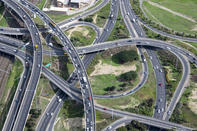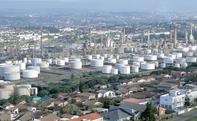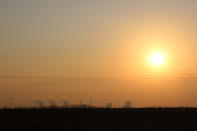Industry and Transport
South Africa is responsible for roughly half of Africa's total greenhouse gas emissions with an energy-intensive economy and the cheap, dirty coal firing the power stations. Cheap electricity has given the country a competitive edge in its market presence. It produces more than half of Africa's electricity - 90 per cent of which comes from burning coal - and use more than half of the electricity ourselves.
Energy-intensive mining, heavy industry and manufacturing account for 45 per cent of our energy demands. Transport comes in next at twenty per cent of total energy consumption. Residential demands consume ten per cent, while commerce and agriculture both use three per cent.
Most of the resulting greenhouse gas emissions come from the energy sector, with significantly lesser amounts deriving from industrial processes, agricultural practices and waste.
As a non-Annex I country, South Africa was not required under Kyoto to reduce its emissions during the 2008 to 2012 target period. The government has nevertheless indicated that it is aware of South Africa's considerable contribution to greenhouse gas emissions and has indicated its intention to clean things up. But this is mostly still only at policy level. Whatever happens from here, a ship this size is slow to turn.
Industry and transport are the two big offenders. Since coal is the main source of greenhouse gas emissions, cleaner ways of burning coal and cleaner fuels must be found. Eskom and Sasol account for nearly 90 per cent of all coal burned in South Africa (at 65 per cent and 24 per cent respectively).
Industry needs to be more energy efficient. The government needs to impose strict emissions audits so it can be determined who the polluters are and then keep them accountable.
Stuck in Traffic

As for transport, buses, mini-bus taxis, trucks and private cars are the bulk of South Africa’s road users. Their exhausts spew out greenhouse gases, carcinogens and other noxious pollution daily as they clog up South Africa's roads.
Each year the same 20 km trip seems to take that bit longer and it's only getting worse in the Western Cape as Somerset West and the northern suburbs bulge with ongoing urban sprawl. Of course, Johannesburg's traffic problems make those of Cape Town look like a kid's party.
It's a constant wonder that this problem has not been fixed. First there is the stress, loss of productivity and wasted time as hundreds of thousands of people spend an hour or two stuck in traffic twice a day, every day of the working week. Then there is the sizeable matter of road upkeep to handle the capacity, as well as the effects of the vast amounts of pollution puffing up from the grim, sluggish snake of traffic.
Government has set targets for reducing lead from petrol and sulphur from diesel but a great deal more needs to be done. Why do we still have streams of vehicles with single occupants sitting bumper to bumper, clogging up the roads?
Private vehicle users need to change their attitude and behaviour. Toll tax for single occupant cars and lanes reserved for full vehicles will encourage people to start lift clubs and to use their vehicles more thoughtfully. Why are larger municipalities not doing this? Once fuel becomes prohibitively expensive, it's likely that we will see increasing numbers of people offering to share their cars with passengers. Rush hour traffic is a simple problem to solve, requiring a combination of political will, capital and a dash of entrepreneurialism.
It's extraordinary that the human species could put a man on the moon five decades ago but has still failed to solve the problem of traffic congestion.
Public transport needs to revolutionise. It has to become more than the left-over option for blue-collar workers and the urban poor who have not yet made it into the stratum of society's car owners. Consider what rush hour would be like if trains and shuttle buses replaced the bulk of those single-driver vehicles.
For every full eighteen-seater bus running between the city centre and the suburbs, there are likely to be seventeen fewer cars on the road. Why are the trains that criss-cross the large urban centres not safer and more reliable?

